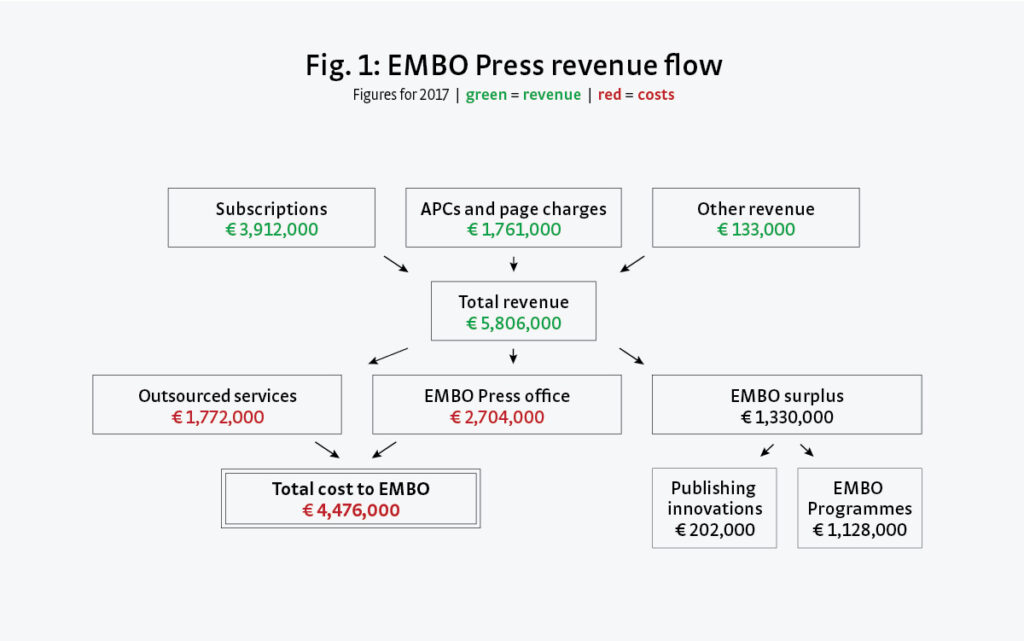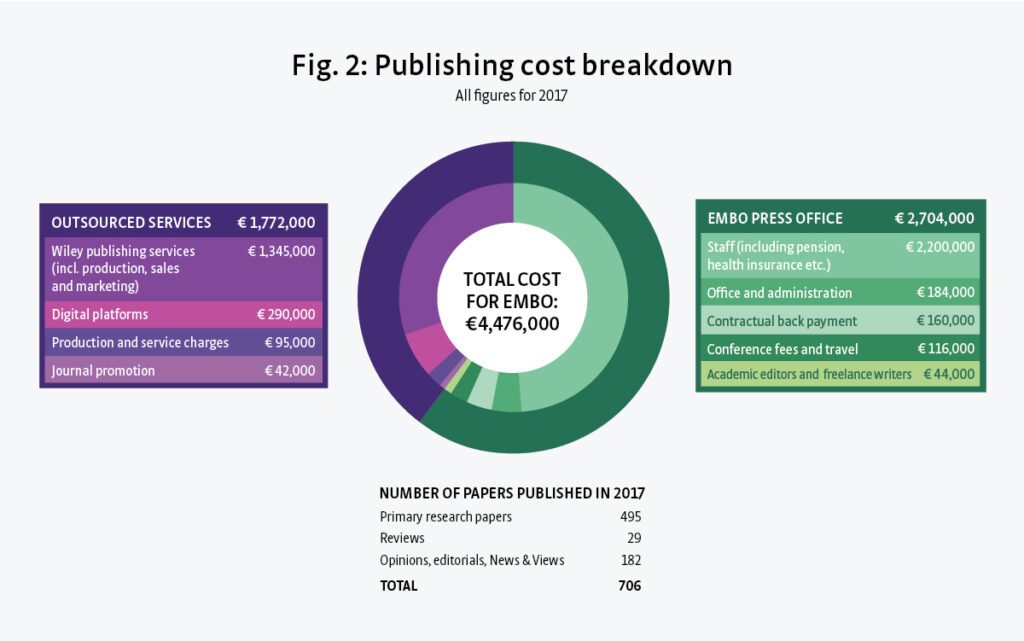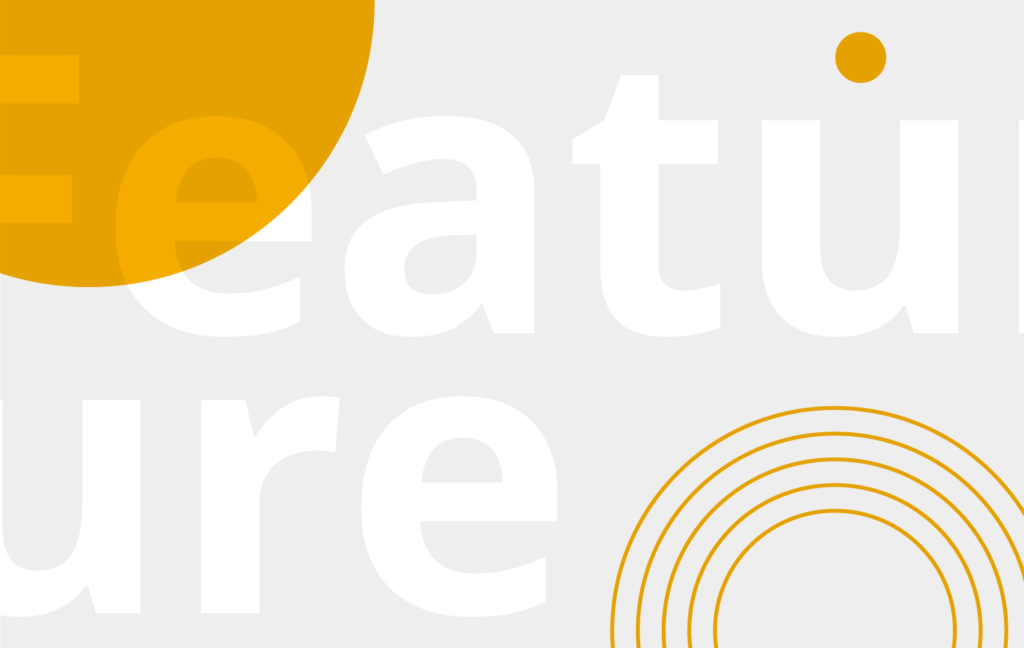24 October 2019 – The current debate on the appropriate costs for article-processing charges (APCs) in Open Access (OA) publishing is to some extent based on speculation and guesswork. This is in part because few publishers and journals have disclosed their costs and charges and what they consist of, making it near impossible to assess the true cost of publishing a paper. This is particularly important in the context of the stipulations included in the European Open Access initiative ‘Plan S’ and possible caps on APCs that funders may decide to impose.
An open discussion of what it costs to run and maintain high quality, selective journals, and who should pay, is only possible on the basis of real data. EMBO, with its mission to serve the scientific community, has a profound interest in what makes up the costs for publishing.
We at EMBO and EMBO Press are therefore making our journals’ finances public to provide transparency and clarity about the costs of publishing articles. All numbers shown below are for the year 2017, for which all transactions are complete.
EMBO Press working principles
EMBO Press publishes five journals. EMBO Molecular Medicine (EMM) and Molecular Systems Biology (MSB) are fully OA, The EMBO Journal and EMBO Reports are subscription-based, with an OA option for authors. Our fifth journal, Life Science Alliance, is an OA journal published in partnership with Rockefeller University Press and Cold Spring Harbor Press since 2018, and is not included in this analysis.
The APCs for OA articles in 2017 were €4,700 per article at The EMBO Journal and EMBO Reports, and €3,300 at EMM and MSB. These APCs are not sufficient to cover the costs of the two OA journals, EMM and MSB, nor the OA papers at The EMBO Journal and EMBO Reports. OA publishing at EMBO Press therefore relies in part on the income from subscriptions.
All four EMBO Press journals are selective journals; the acceptance rate at all four is between 9% and 13%. This is important to keep in mind when looking at the finances, because papers that are rejected, whether after initial assessment or after review, also require resources and therefore cost money, even though they generate no income.
Editors and assistants spend about 17 hours on a paper that ends up being published, of which six hours are spent after final acceptance on pre-production checks, integrity checks and data curation. For papers that are not reviewed, slightly under two hours are spent on initial quality checks and editorial assessment.
Journal revenue and costs
In 2017, the total revenue for the four journals was €5.806 Mio. Subscriptions generated €3.912 Mio. The remaining revenue (€1.894 Mio.) consists mainly of APCs and page charges for non-OA papers (see flowchart in Fig. 1).
EMBO Press outsources a range of services to Wiley as well as other external suppliers (see Fig. 2). The services from Wiley include production (e.g. copyediting, typesetting and indexing), part of the quality control process, marketing, sales and management of subscriptions and OA payments. They also include innovative activities such as the SmartFigures Lab linked with EMBO’s SourceData project, as well as partnerships and technical integration with organizations such as CrossRef, ORCiD, Publons and Kudos. Services provided by others include essential technical and digital infrastructure, such as website hosting and the manuscript submission system. In total these costs amount to €1.772 Mio.

Of the sum that goes to EMBO (€4.034 Mio.), €2.704 Mio. are needed to run the EMBO Press office (see Fig. 1 and cost breakdown in Fig. 2). The remaining €1.33 Mio. are used to support EMBO activities. As a not-for-profit organization, we use this money for activities that serve the scientific community. These include innovations in publishing, such as SourceData, and many of the activities that complement and develop the EMBO Programmes, such as science policy work, new activities within the Young Investigator Programme, child benefits for postdoctoral fellows; childcare at meetings and travel grants.
The cost of publishing
The largest component of the EMBO Press costs of €2.704 Mio. are staff-related. Staff working at the four EMBO Press journals include 17 scientific editors (including those with managerial responsibility), three editorial assistants, a data integrity analyst, a project and marketing manager, and a designer. Salaries and employer costs (including pension contributions, health insurance, maternity cover etc.) make up €2.2 Mio. Office expenses, recruitment costs, conference fees, travel and other items add a further €504,000 (see Fig. 2).
Adding the costs at EMBO Press, for Wiley’s publishing services and for technical infrastructure and production, the total cost of publishing in 2017 was €4.476 Mio.

Many discussions have focused on what it costs to publish a research article. Because the EMBO Press journals publish reviews, editorials and other ‘front matter’ in addition to research articles, the precise cost per research article cannot immediately be extracted from the figures shown without complex analysis. We can, however calculate what EMBO Press would need to charge per paper on average in order to cover the publishing costs of €4.476 Mio.
In 2017 the four EMBO Press journals published 706 articles, of which 495 were primary research papers and 29 were reviews. The remaining 182 articles were opinion pieces, editorials and News & Views articles. If the annual cost of €4.476 Mio. is spread across all 706 articles, the cost per article amounts to €6,340.
However, in an OA journal financed only through APCs, review articles, opinion pieces, editorials and News & Views articles usually do not generate income. Thus if the costs for the entire content at EMBO Press had to be financed only through the APCs for research papers, then the charge for each research paper would have to be €9,040.
We strongly support the idea of making the final, published versions of all scientific papers openly available immediately. But the money for this must come from somewhere. Because EMBO Press publishes both research papers and other articles, the above numbers can only indicate the order of magnitude of the cost of publishing a paper in high quality, selective journals. What is clear, however, is that our current APCs between €3,300 and €4,700 would not be sufficient to cover our costs. It is also important to note that these figures are based on raw costs. Thus financing the journals exclusively through APCs would only cover the pure publishing costs and forego the surplus for supporting EMBO activities.
In working towards an OA future, the challenge remains to identify ways to fund high quality, selective publishing in an open and sustainable way. We are interested in engaging in further conversation on this subject.



